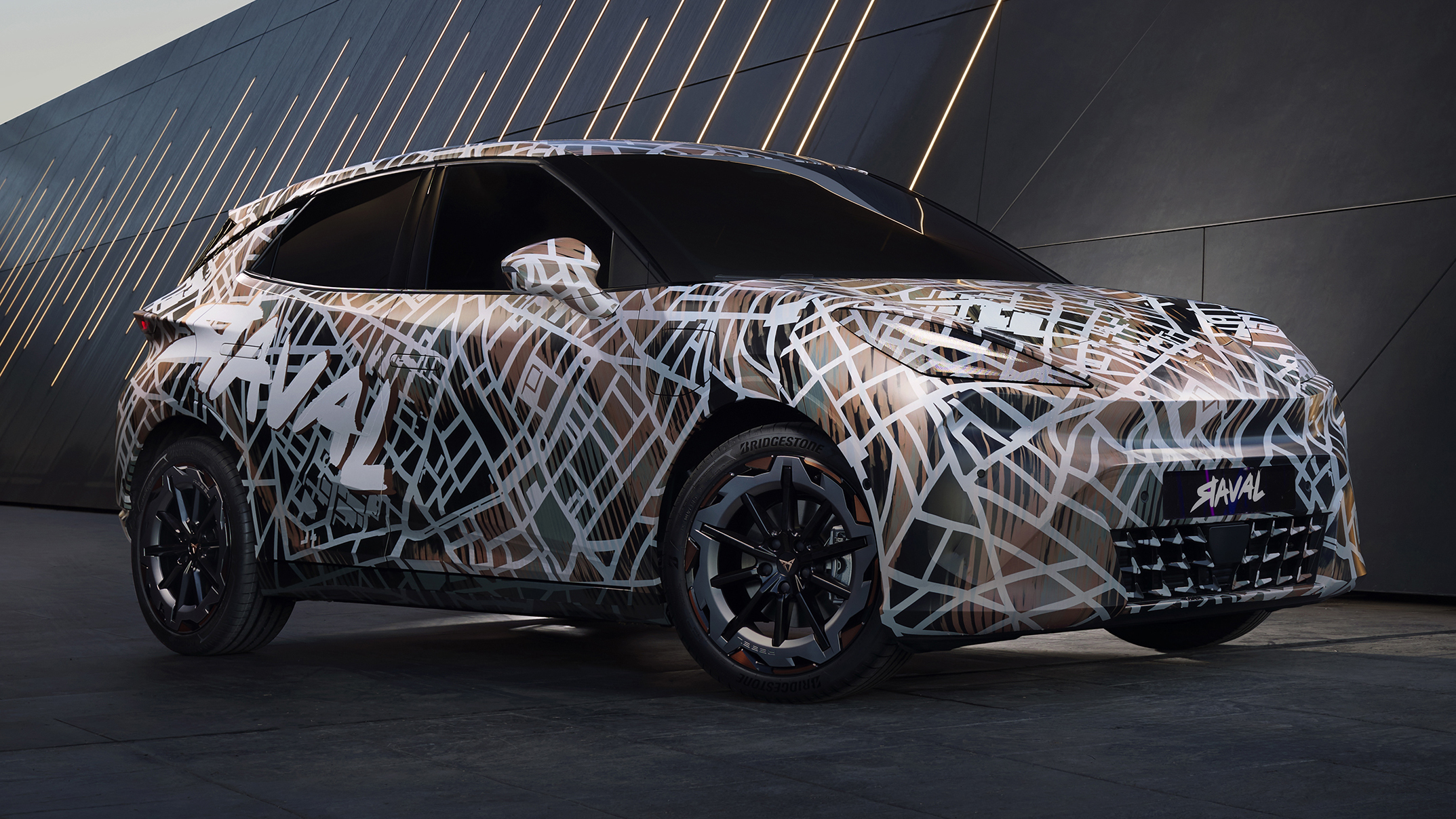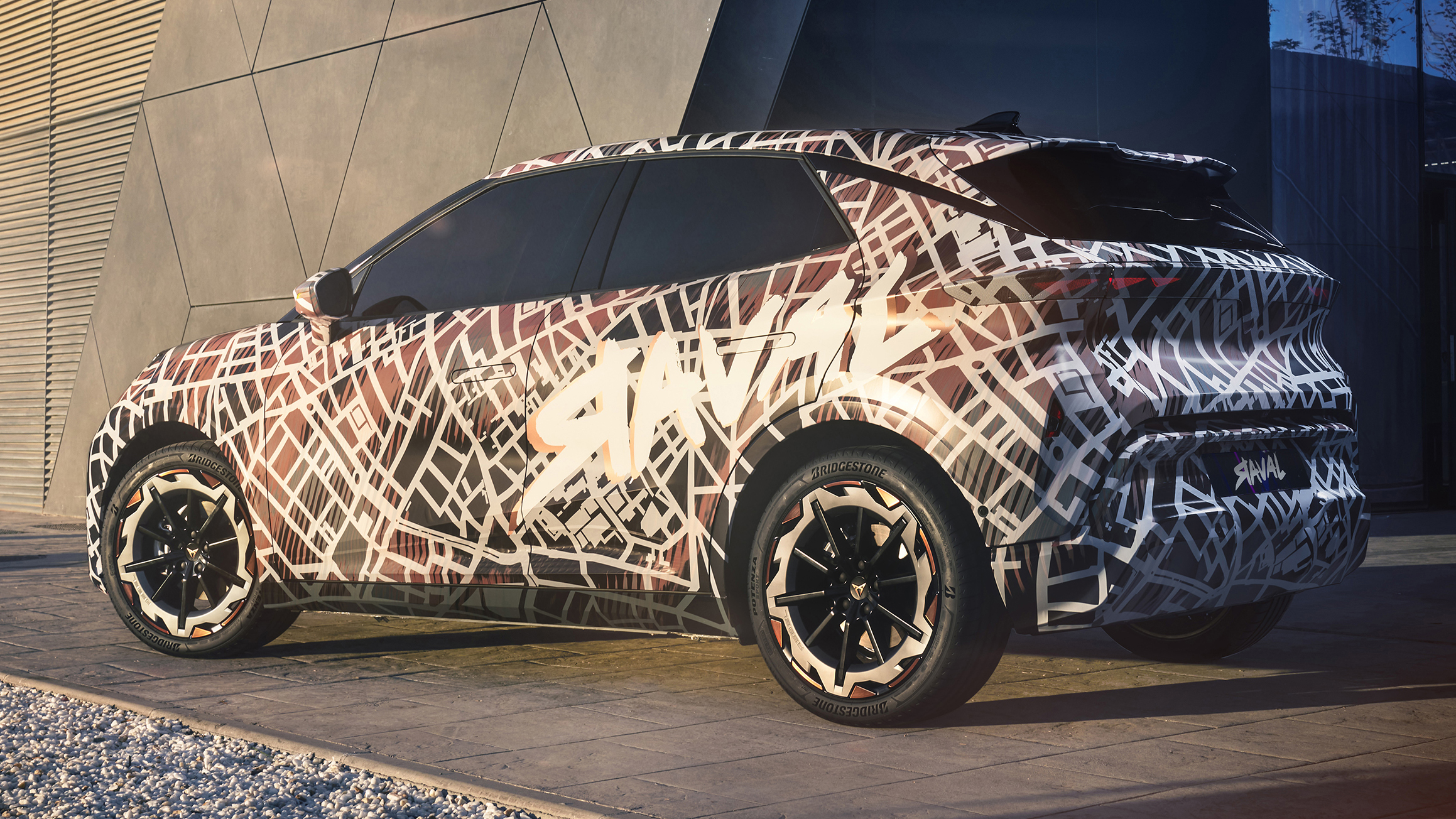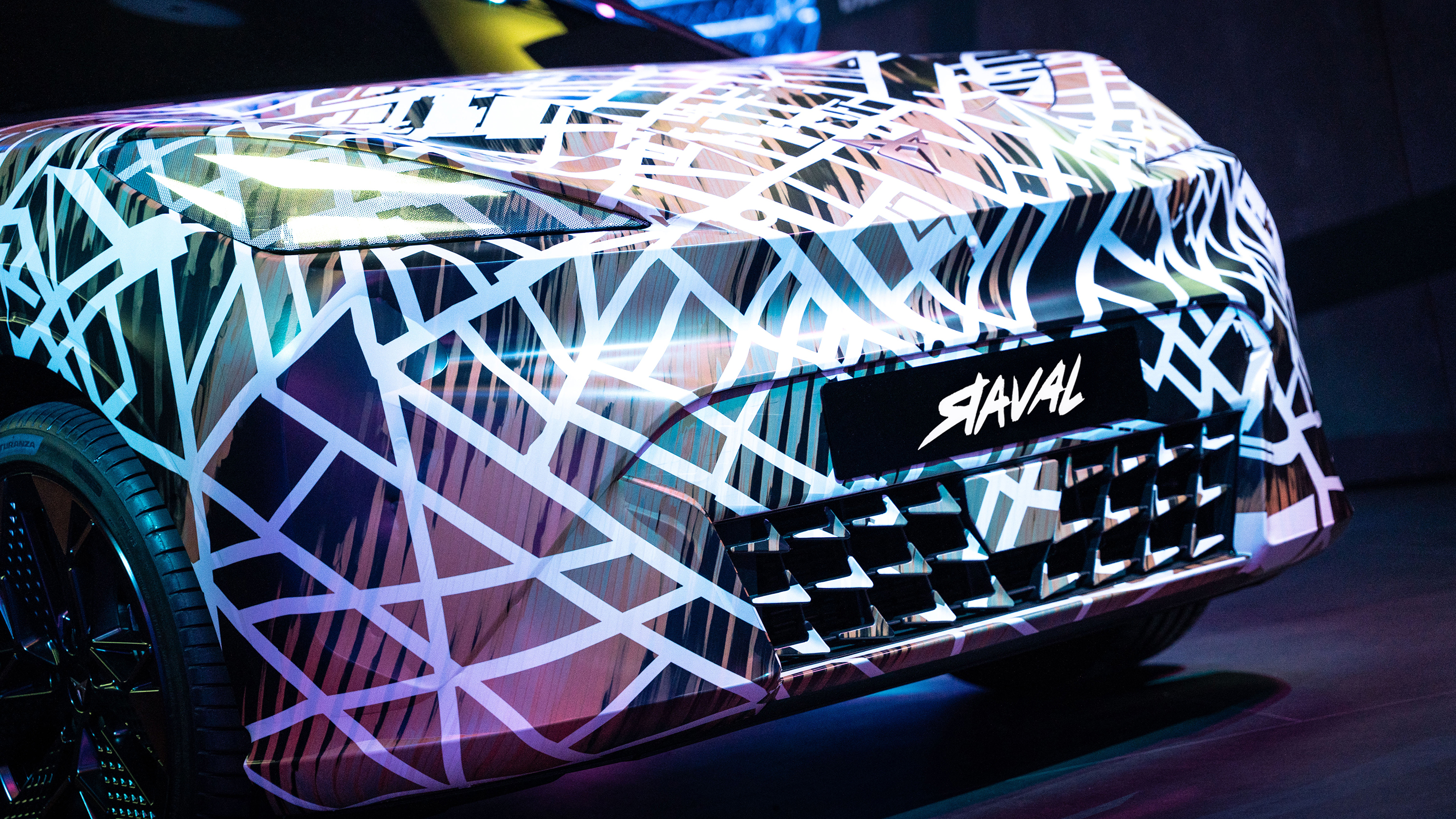
Cupra Raval prototype review: baby EV hatch guns for Alpine
What's a 'Raval' when it's at home?
Think of the Cupra Raval as a smaller Born, just as the Ibiza is a smaller Leon. Except… don't. First, for the Raval, Cupra had design freedom whereas the Born is basically a VW ID.3 wearing eyeliner. Second, the Raval is front-drive, the Born rear.
The Raval is first of a whole new posse of VW Group small EVs, all engineered by Cupra/Seat in Barcelona. Others in the first wave are a VW ID.Polo hatch, plus Skoda Epiq and VW ID.Cross crossovers. We've seen them all in eye-defeating camo wraps or as ‘nearly there’ concepts so we know they have different skins.
They share about 70 per cent of their parts underneath, I'm told by Cupra's – and the whole VW Group's – head of R&D Werner Tietz. That parts-sharing drives down cost. I've been driving a well-finished prototype ahead of its full reveal.
The Raval, named after a "vibrant, reinvigorated" district of Barcelona (the Cupra Salford if you will), has a scalloped, wedgy body. The lights and jewellery are all Cupra triangles. "Triangles are dynamic, squares are static, circles are directionless," say the designers. The cabin has interesting woven textures, nothing that fakes leather or 'natural' grain.
Who's it for?
Swapping the motor to the front, says Tietz, suits young drivers who expect front tyre scrabble under power, not a rear end stepping out. And it makes the boot deeper. And that cheapness thing: the motor, inverter, high-voltage electronics and charge socket are all at the front, as is the connection to the battery. No fat cables run the length of the car, and copper costs money.
So do cobalt and nickel, so only the higher-range version will have the usual lithium-nickel-manganese-cobalt (NMC) battery cells, good for 280 miles WLTP range. The shorter-range one has the lithium-iron-phosphate (LFP) kind. More money is saved by integrating the pack structure more closely into the body than in the bigger ID cars, so metal isn't duplicated.
So ahmuchizzit?
You'll be able to get a base-model Raval for €26,000, they claim. Call it £23,000. But not yet, and the one I'm driving isn't it. There will be three launch versions with the bigger battery. This is the top of them, the VZ, which is Cupra's abbreviation for ‘hot’.
It's a little hatch with a 226bhp motor, 213lb ft of torque, matrix headlights, 19in wheels with 225-section performance tyres, its own unique steering knuckle castings for the big wheels, an ESP sport setting, a real, electronically controlled limited-slip diff, adjustable adaptive dampers, bucket seats and – versus its relatives – a 15mm body drop and 10mm width increase.
It's about 1,500kg, an admirable weight cut over the Born. That power and those big tyres cut range to 250 miles. Alpine A290 rivalry ahoy, though with this kit it'll likely be a bit more expensive.
What's it like to drive?
The inside is covered in black cloth except the screens, so not much to report there except the racy seats are excellent, and the driving position is fine. Forward vision is panoramic; over the shoulders much less so. Tietz sits alongside me, so I'm absorbing information from the passenger as well as the car itself.
Top Gear
Newsletter
Thank you for subscribing to our newsletter. Look out for your regular round-up of news, reviews and offers in your inbox.
Get all the latest news, reviews and exclusives, direct to your inbox.
Power is properly stout, geared for the mountain roads where we find ourselves. you can select different levels of 'engine' noise through the speakers, an EV soundscape that mixes actual samples from motors, gears and the Formula E racers' powertrain with some deeper harmonics that you feel as well as hear. That's actually a useful aid to judging speed and powertrain effort.
The pedal brings urgent response but not, even in Cupra mode, anything so sharp you can't be smooth. For regeneration there are paddles, plus a separately selectable adaptive mode that follows the vehicle in front and takes account of navigation input to slow for junctions. The actual brakes, discs all round, are confident.
That diff really does its thing. Traction is terrific, and I couldn't provoke much torque steer even by dropping the inside front tyre off the edge of the tarmac out of a sharp bend. Steering is progressive and easily metered, like the accelerator, if a bit gluey in the Cupra drive mode. Pour this Raval into a bend and it tracks around like a keen little puppy.
Maybe it's not quite as playful as the Alpine, maybe the torsion-beam rear suspension gives it less communication than the very best, but it's still fun: neutral and grippy and unbothered by bumps. "I hate understeer," says Tietz. What are your own cars? "A Tavascan because I like electric cars. And a 911 GT3 and a Lancia Integrale."
The ride is fairly firm, but the dampers do let the springs do their stuff. Anyway, the low battery means it rolls little into corners, without needing stiff anti-roll bars that would corrupt the straight-line ride.
Sounds like it's off to a good start, then.
It's an excellent sporty little EV, and that means it's all in place for gentler, cheaper ones. They'll face up to multiple super-attractive Renault EVs, Hyundai and the many-headed Hydra that is Stellantis and its Abarth, Alfa, Peugeot and Vauxhall EVs. There's several Chinese rivals and by the time I've finished typing this sentence, there will no doubt be more. The VW Group sure needs cheaper EVs. Good ones. This first sign is propitious.
Featured

Trending this week
- 2026 TopGear.com Awards
The very best cars of the year: welcome to the 2026 TopGear.com Awards
- Long Term Review
Six-month verdict: should you buy a Jaecoo 7?






